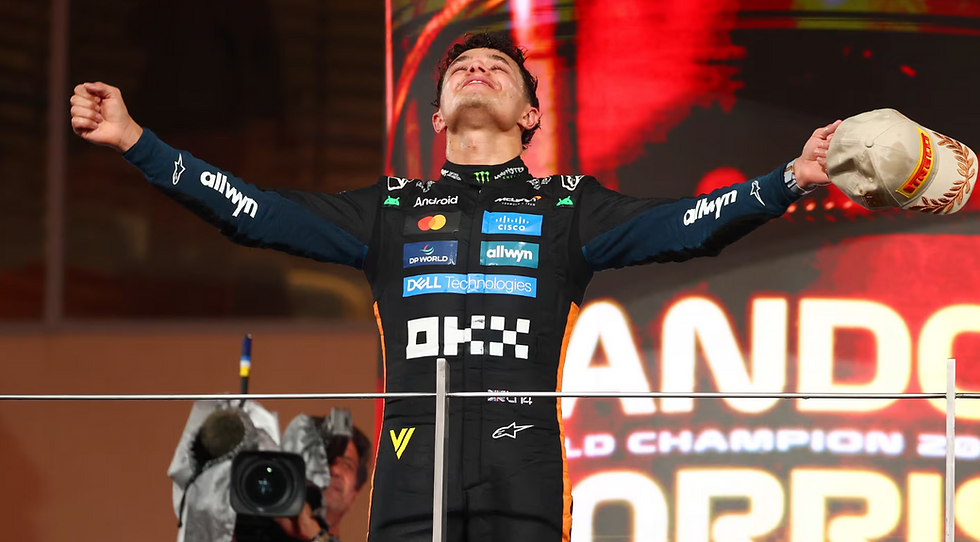The Tactical Genius of Carlos Sainz at Singapore
- Jenny Clynes

- Sep 20, 2023
- 3 min read
Written by Jenny Clynes, Edited by Sean McKean
It was his second pole position of 2023, the navy Redbulls were nowhere to be seen in the front rows. The chance to end both Redbull and Max Verstappen’s streak of consecutive wins was almost within reach, and Carlos Sainz, through excellent tactical skills on the streets of Singapore, was crowned the first non-Red Bull winner of the season. This is an analysis of how Sainz was able to pull off such an immense win in one of the most nail-biting races of the 2023 season.

After a race of leading the pack, it was clear that Sainz’s tyres were done after having to defend his position from lights out. Mercedes, however, were on much fresher tyres and had the pace to threaten Sainz’s second Formula 1 win. Entering Turn Seven of the Marina Bay Circuit, Sainz slowed down slightly, allowing him to drop back enough to grant Lando Norris, who was second, to gain DRS. Drag Reduction System (DRS) allows the cars to go faster to help their chances of overtaking the car in front, but they must be within one second of the car in front in order to allow the use of DRS. This explains why Sainz dropped back so he could be within one second from Norris, thus granting Norris access to the system.
When Riccardo Adami (Sainz’s race engineer) reports that “Lando [is] 0.8 behind with DRS,” Sainz simply responds with, “Yeah, it’s on purpose,” highlighting how - at this point in the race - Sainz was using his own strategy.
So, why did Sainz allow Norris to have DRS if that meant Norris could have taken the lead away from him? Well, Sainz had a rough idea of the pace which Norris had in the McLaren and the Marina Bay Circuit is renowned to be a very difficult track for overtaking; therefore, Sainz ultimately knew Norris would not risk overtaking him at that stage in the race.
With the DRS, Norris was able to go faster and defend from the two Mercedes’ of Hamilton and Russell who were threatening the race win. If Norris did not get DRS, then he would have most likely been overtaken by the two, and since they had better pace at the end of the race, they would have gotten past Sainz to take the win in the final laps.
So, through this strategy, Sainz was able to help Norris achieve an amazing second-place finish and ensure that Norris was a barrier that the Mercedes’ had to get through before they could reach the Ferrari. This, ultimately, helped Sainz in achieving his mega win under the lit up skyline of Singapore.

This solo strategy devised by Sainz in the closing stages of the race is even more impressive when we consider it in the context of the Singapore Grand Prix. This Grand Prix is one of the hottest and most humid tracks on the Formula 1 calendar, with the temperature in the cockpit reaching highs of up to 60 degrees celsius. This severe heat can cause the brain to cognitively dysfunction; in other words, it can cause the brain to not be able to think straight let alone devise complex and impressive strategies when under immense levels of pressure and four cars breathing down your neck.
When passing the checkered flag, Sainz is heard saying to his team via the radio that this was his “first smooth operation with Ferrari,” and what a smooth operation it was indeed.







Comments